When considering the myriad factors influencing a child’s overall well-being, the role of diet often takes center stage, and rightly so. What a child consumes daily extends far beyond simple caloric intake, profoundly impacting various bodily systems, including the intricate development and ongoing health of their oral cavity. From the earliest stages of tooth eruption to the establishment of permanent dentition, the nutrients, or lack thereof, within their diet lay the groundwork for a resilient and healthy smile. Understanding this connection is not merely about preventing cavities; it’s about fostering a comprehensive approach to pediatric health that recognizes the mouth as a gateway to the entire body. The choices made at the dinner table can either fortify the natural defenses against oral diseases or inadvertently create an environment where problems can thrive. It’s a subtle yet powerful influence, often underestimated in its long-term ramifications. The dynamic interplay between food and oral health necessitates a more in-depth exploration, moving beyond simplistic advice to embrace a nuanced understanding of nutritional science and its direct implications for dental wellness.
The Foundation of Strong Teeth: Nutrient Absorption is Paramount
The journey to strong, healthy teeth begins with nutrient absorption is paramount. A balanced diet rich in essential vitamins and minerals provides the fundamental building blocks necessary for robust tooth structure and healthy gums. Calcium and phosphorus are perhaps the most well-known contenders in this arena, crucial for the formation of tooth enamel and dentin. However, their efficacy is significantly amplified by the presence of Vitamin D, which facilitates the absorption of calcium. Without adequate Vitamin D, even a calcium-rich diet may not translate into optimal bone and tooth density. Similarly, Vitamin C plays a vital role in maintaining the integrity of gum tissue and protecting against gingivitis, a common precursor to more severe periodontal disease. Iron contributes to the overall health of blood, including that which supplies the oral tissues, promoting proper function and healing. Beyond individual nutrients, the synergistic effect of a diverse array of vitamins and minerals found in whole foods creates an environment conducive to oral health. For instance, magnesium, often overlooked, is integral for proper calcium utilization and bone formation. The complexity of these interactions underscores why a holistic dietary approach, rather than reliance on isolated supplements, yields the most profound benefits for a child’s developing smile.
Sugary Delights and Their Insidious Impact: The Dental Demolition Derby
It’s no secret that sugary delights and their insidious impact are a primary antagonist to dental health. Refined sugars, prevalent in many processed foods, snacks, and beverages, fuel the harmful bacteria residing in the mouth. These bacteria metabolize sugars, producing acids that erode tooth enamel, leading to cavities. The frequency of sugar exposure is often more detrimental than the sheer quantity. Frequent snacking on sugary items keeps the oral environment acidic for extended periods, providing a continuous assault on tooth surfaces. This constant acid attack creates a dental demolition derby within the mouth, gradually wearing down the protective enamel layer. Beyond the immediate acid production, sticky candies and certain carbohydrates can cling to teeth, prolonging contact and exacerbating the problem. Even seemingly healthy fruit juices, when consumed excessively, can contribute to enamel erosion due to their natural sugar content and acidity. The key lies in moderation and mindful consumption, encouraging children to choose water over sugary drinks and to limit sugary snacks between meals. Educating children about the direct link between what they eat and the health of their teeth empowers them to make informed choices, fostering a sense of ownership over their oral health from a young age.
The Protective Power of Whole Foods: A Natural Defense System
Embracing the protective power of whole foods offers a natural defense system against dental problems. Foods rich in fiber, such as fruits, vegetables, and whole grains, stimulate saliva production, which acts as a natural cleanser, washing away food particles and neutralizing acids. Crunchy fruits and vegetables, like apples and carrots, also provide a gentle scrubbing action on tooth surfaces, aiding in plaque removal. Moreover, these foods are packed with antioxidants, which combat inflammation and support gum health. Dairy products, particularly plain yogurt and cheese, are excellent sources of calcium and phosphates, which help to remineralize tooth enamel and strengthen teeth. The proteins and fats in cheese can also help to protect teeth by forming a barrier against acids. Nuts, another fantastic whole food option, are rich in healthy fats, protein, and various minerals that contribute to overall oral health. Including a wide variety of these nutrient-dense foods in a child’s daily diet not only supports their dental health but also contributes to their overall growth and development, establishing healthy eating habits that can last a lifetime.
Beyond the Basics: Understanding Acidic Foods and Erosion
While sugar’s role is well-documented, it’s also crucial to consider understanding acidic foods and erosion. Many seemingly healthy foods and beverages, such as citrus fruits, tomatoes, and carbonated drinks, are highly acidic. While these foods offer valuable nutrients, their acidic nature can contribute to enamel erosion over time. This process is distinct from cavity formation, though the two can be interconnected. Enamel erosion weakens the tooth structure, making it more susceptible to decay and sensitivity. The key is not to eliminate these foods entirely, as they offer significant health benefits, but rather to manage their consumption. Encouraging children to drink water after consuming acidic foods can help rinse away acids and neutralize the oral environment. Using a straw for acidic beverages can minimize contact with teeth, and avoiding brushing immediately after consuming acidic foods allows enamel to re-harden, reducing the risk of abrasion. Parental awareness of the pH levels of different foods and beverages can empower them to make informed decisions about their child’s diet, protecting their developing smiles from the silent threat of acid erosion.
Saliva’s Superpowers: Nature’s Oral Cleanser
Often underestimated, saliva’s superpowers make it nature’s oral cleanser. This remarkable fluid plays a multifaceted role in maintaining oral health. It continually washes away food particles and debris, preventing them from clinging to tooth surfaces. More importantly, saliva contains minerals like calcium and phosphate, which help to remineralize tooth enamel, repairing the microscopic damage caused by acid attacks. It also contains enzymes that initiate the digestion of food and antibodies that combat harmful bacteria. A healthy flow of saliva is essential for buffering acids produced by oral bacteria, maintaining a neutral pH balance in the mouth. Dehydration, certain medications, and even mouth breathing can reduce saliva production, making the mouth more vulnerable to decay and gum disease. Encouraging children to stay well-hydrated by drinking plenty of water throughout the day is a simple yet effective way to ensure optimal saliva flow, harnessing its natural protective properties and strengthening their defense against oral health challenges.
The Gut-Mouth Connection: More Than Just Digestion
The emerging understanding of the gut-mouth connection reveals a relationship that is more than just digestion. The microbiome in our gut, a vast ecosystem of bacteria, profoundly influences our overall health, including our oral health. An imbalance in the gut microbiome can lead to systemic inflammation, which can manifest in the mouth as gum disease and other oral issues. A diet rich in probiotics, found in fermented foods like yogurt and kefir, can promote a healthy gut microbiome, which in turn supports a balanced oral microbiome. Similarly, prebiotics, dietary fibers that feed beneficial gut bacteria, also contribute to this synergistic relationship. When the gut is healthy, it can better absorb nutrients essential for oral health, creating a virtuous cycle. Conversely, a diet high in processed foods and sugars can disrupt both gut and oral microbiomes, making the individual more susceptible to various health problems. Recognizing this intricate connection encourages a more holistic approach to diet, emphasizing foods that nourish both the gut and the mouth for comprehensive well-being.
Dietary Habits: Frequency and Timing Matter
It’s not just what a child eats, but also when and how often. Dietary habits: frequency and timing matter significantly in oral health. Grazing throughout the day on sugary snacks or acidic beverages provides a constant fuel source for decay-causing bacteria and prolonged acid attacks on enamel. Each time a child consumes sugar, their mouth experiences an acid surge that can last for 20 minutes or more. Frequent snacking, therefore, means their teeth are under almost constant assault. Conversely, limiting sugary and acidic foods to mealtimes allows saliva to neutralize acids and remineralize enamel between exposures. Encouraging three balanced meals a day with limited snacking, especially on sugary items, is a far healthier approach for dental well-being. If snacks are necessary, opting for tooth-friendly choices like cheese, plain yogurt, fruits, and vegetables can make a significant difference. Establishing healthy eating routines from an early age not only supports dental health but also promotes overall dietary discipline and well-being.
Beyond Cavities: Diet’s Role in Gum Health
While cavities often dominate the conversation, diet’s role in gum health is equally critical. Gums, or gingiva, provide the essential support structure for teeth. A diet deficient in essential vitamins and minerals, particularly Vitamin C, can weaken gum tissues, making them more susceptible to inflammation and infection. Gingivitis, the initial stage of gum disease, often manifests as red, swollen, and bleeding gums. If left unaddressed, it can progress to periodontitis, a more severe form that can lead to bone loss and ultimately tooth loss. Antioxidants found in fruits and vegetables play a crucial role in reducing inflammation and protecting gum tissues from damage. Omega-3 fatty acids, found in fatty fish and some nuts, also have anti-inflammatory properties that can benefit gum health. Ensuring a consistent intake of these nutrients through a balanced diet is fundamental for maintaining healthy gums and preventing the progression of periodontal disease, safeguarding the foundation of a child’s smile for years to come.
Education and Empowerment: Shaping Healthy Choices
Ultimately, education and empowerment are key to shaping healthy choices. Parents play a pivotal role in modeling good dietary habits and educating their children about the importance of nutrition for oral health. This isn’t about imposing strict rules but rather fostering an understanding of cause and effect. Explaining in simple terms how certain foods can harm their teeth, and how others can protect them, empowers children to make informed decisions. Involving children in meal preparation and grocery shopping can also make them more invested in healthy eating. Creating a positive and supportive environment around food choices, rather than one filled with restrictions and prohibitions, can lead to more sustainable healthy habits. Equipping children with the knowledge and tools to make smart dietary choices not only benefits their immediate oral health but also lays the foundation for a lifetime of healthy eating and overall well-being. The impact of these early lessons extends far beyond the dental chair, influencing their relationship with food and their perception of health for years to come.
Long-Term Impact: A Smile for Life
The dietary choices made during childhood have a long-term impact, shaping not just their current oral health but their ability to maintain a smile for life. Healthy eating habits established in early years are more likely to persist into adolescence and adulthood, providing continuous protection against dental diseases. Conversely, a diet high in sugars and processed foods can lead to a lifetime of dental problems, including chronic cavities, gum disease, and even systemic health issues. Beyond the physical aspects, a healthy smile contributes significantly to a child’s self-esteem and confidence. The ability to speak, eat, and smile without pain or embarrassment is a fundamental aspect of quality of life. Investing in a child’s oral health through mindful dietary choices is an investment in their overall happiness and future well-being, ensuring that their smile remains a source of joy and confidence throughout their lives.
